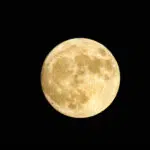The Longest Day (Summer Solstice) is observed on either June 20, 21, or 22, but this year, it falls on June 21. The timing shifts because it depends on when the Sun reaches its northernmost point from the celestial equator.
As the sun creeps up over the hills and into your town on June 21, you’ll know it’s here. That blessed time of year when barbecues and beach trips reign, when work slows and summer holidays mean getting together with friends and family. Just thinking about it likely brings up the smell of fresh cut grass and the taste of cold lemonade. Summer Solstice — also known as the first day of summer — has arrived.
It signals the start of astronomical summer. As a result, the days get shorter as summer progresses, first gradually but then at increasingly larger daily intervals as the September equinox approaches and ushers in the beginning of fall. Because the Sun travels across the sky in its most elongated path during the summer solstice, that day has the most daylight hours.
(We interrupt this poetic paragraph to remind you that this applies only to those living north of the equator.)
Now then — people have celebrated this day for thousands of years. Some of the earliest party animals were the ancient Mesopotamians, Celtic Druids, Chinese, and Egyptians, and all of these cultures had their own ways of celebrating that make even our craziest backyard barbecues look tame. When was the last time you had a multi-story bonfire and danced around it naked? That’s what we thought. But cultures have had good reason to celebrate since ancient times right up until today.
It’s the longest day of the year. Enjoy!
Oh, and Dairy Queens are celebrating today by giving away free cones (with any purchase) all day long! Download their mobile app for details.
History of Summer Solstice
The day of the summer solstice, which occurs when the Sun is at its farthest distant point from the equator, is also the day that is considered to be the longest of the year. Since the Neolithic era, this day has been observed as the summer solstice, also known as the summer’s midpoint.
In the Neolithic cultures of Northern and Central Europe, the dates of the crop cycles were associated with the summer solstice. People in Celtic, Slavic, and Germanic cultures traditionally celebrated it by lighting bonfires to bolster the Sun’s vigor for the duration of the crop season and ensure a healthy harvest.
Numerous Neolithic stone circles appear to have been constructed around the Sun’s movement at solstices. However, because there are no written accounts from this time period, determining the exact purpose of these rock edifices is difficult. On the other hand, the stones appear to be carefully positioned to align with the Sun’s movements, framing solar motion on the summer and winter solstices.
Stones at specific solstice axes were even hammerstones to frame the sunrise for those standing in the center of the circle. This suggests that the alignment of the stones with the Sun’s motions was intentional. The summer solstice was regarded as a significant cultural event in many ancient communities.
In Ancient Egypt, June Solstice helped the Egyptian tribes predict the annual flooding, as this day corresponded to the rise of the Nile River. They used this day as a marker to schedule their planting and harvesting of crops.
Different tribes and religions around the world also observed June Solstice in cultural and faith-based traditions. In Northern Europe, they refer to it as ‘midsummer,’ while other neo-pagan religions such as Wiccans refer to it as ‘litha.’ Christians and Catholics used this day to commemorate St. John’s Day in observance of John the Baptist’s birthday. On the other hand, Ancient Romans counted the days leading up to June Solstice for the celebration of Vestalia, a religious festival to honor Vesta, the goddess of the hearth.
In modern times, June Solstice marks the one-month countdown to the Olympic games opening. This was based on the ancient Greek calendars, where Summer Solstice marked the beginning of the year.
Summer Solstice timeline
There is a belief that the distinctive stone circle at Stonehenge determines the precise time of the summer solstice in June.
Ancient Egyptians develop the "shadow clock" — a portable gadget that monitors time throughout the day.
According to Pliny, a Roman author, naturalist, and natural philosopher, the first record of a sundial being in Rome dates back to 293 B.C.
The pocket sundial, the forerunner of the pocket watch, becomes very popular during this period.
Summer Solstice - Survey Results
Summer Solstice FAQs
What is the difference between the summer solstice and winter solstice?
Summer Solstice happens in the north where the nights are shorter, and Winter Solstice happens in the south where the nights are longer.
How do Scandinavians celebrate June Solstice?
They have festivities where maypoles are erected, homes are decorated with garlands, and girls wear flowers in their hair.
In what ways is the Summer Solstice linked to our mood?
The Summer Solstice marks the official start of summer in many parts of the world, which could positively impact health in the form of greater sleep and a happier disposition. People often feel better and are happier during this time of year.
What is the spiritual significance of summer?
The Summer Solstice serves as a bittersweet reminder that nothing lasts forever. We inhabit a realm where everything undergoes a continual cycle of rebirth and decay. When we keep in mind that the things we cherish don’t remain forever, we can cherish them much more while still physically present.
The solstice is observed by which religion?
Today, the solstices are almost exclusively celebrated by Pagans. Litha, the most major Pagan celebration, begins on the eve of the Summer Solstice and celebrates the power of the Sun God and the midsummer solstice.
Summer Solstice Activities
Don’t miss a minute
Yes, this requires waking up early — very early — but don’t let that stop you. This actually starts the day before by making a list of everything you want to accomplish on June 21. Try to wake up before the sunrise, and find a place to watch it. Then, go about completing your list. Don’t rush too much; you’ve got plenty of time today. Then, find a spot to watch the sun go back down. It may only be by a few seconds, but you just successfully spent the longest day of the year being extremely productive.
Get outside
All over the world, one of the most common ways to celebrate Summer Solstice is to spend it outside. Take the family camping, have a cookout with your best friends, make a slip’n slide in the yard for the kids. All of these are surefire ways to take full advantage of the prolonged sunlight. Eat outside and enjoy the beauty of the world around you. An outdoor gathering might be joyous, but a change of location can be just as enjoyable. Get the family together and visit a park or the beach for a barbecue or a picnic.
Do as the ancients did
If you’re up for a crazy party, do some research into how ancient cultures welcomed the summer season, and host a party with more or less the same celebrations. For example, if you wanted to emulate Northern European culture, you could throw a Litha party. Eat fresh fruit and vegetables that are ready for picking at this time of year, have a giant bonfire of oak and dance wildly around a maypole. Encourage ancient-era clothing for a really memorable, albeit strange, Summer Solstice celebration. You can stay up and gaze at the stars. If this is your first time, you can borrow a book or download an app to assist you in spotting the constellations.
7 Ancient Civilizations Who Celebrated The Sun
Why We Love Summer Solstice
Welcome the dog days
School’s out, and for many businesses, summer also marks a slowdown period. Perhaps we leave the office a little earlier, or our schedules aren’t packed quite as full with meetings. We plan family vacations and take extended time off, which research has shown is a critical part of staying focused and committed to your work when things aren’t so slow. It’s a time for rest, relaxation, and rejuvenation.
Bring on the night picnics
Night picnics are popular in the southern hemisphere during June Solstice. Longer nights mean longer conversations with friends and a longer time to rest before the next day!
It is the longest day of the year
Who doesn’t love a long day? Today is the longest day, and you get to soak up more sun while enjoying the day with family and friends. So seize this day by enjoying the outdoors on a picnic. Pack your favorite snacks, grab a book, and bathe under the cozy, warm sun.
Summer Solstice dates
| Year | Date | Day |
|---|---|---|
| 2024 | June 21 | Friday |
| 2025 | June 21 | Saturday |




